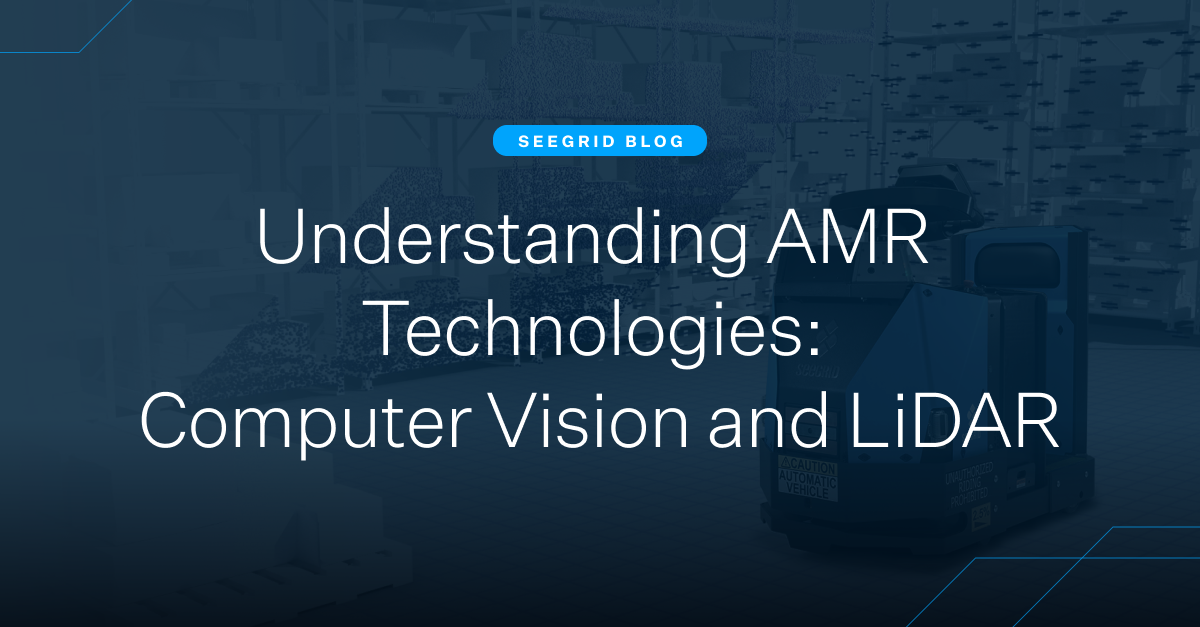When you think back to films from 20 years ago, artificial intelligence was portrayed as frighteningly advanced and as having a mind of its own. While AI is definitely smart, AI solutions aren’t plotting to dominate the world or your supply chain. However, AI and industrial robots are making a positive impact on many aspects of supply chain operations.
Here’s a rundown of artificial intelligence and robotics and their impact on the workplace and the supply chain.
Improving Facility Safety
There is no doubt that AI and robotics have a positive impact on the safety of manufacturing, warehousing, and distribution facilities. Every human worker operating a manually driven heavy machine is constantly on a mission to complete their latest task as quickly as possible to keep facility operations moving smoothly. However, when speed is combined with heavy traffic (foot traffic and manually-driven machines, alike), accidents often occur. Each year on average, 97,000 manual forklifts are involved in an injury or fatality.
Automated technologies, like autonomous mobile robots (AMRs), are proven to make material handling facilities safer while boosting productivity. In highly dynamic environments, humans can easily become distracted, tired, or not have full visibility when operating manual vehicles. This is why many companies are seeking alternative solutions with AMRs and forklift-free environments.
Seegrid technology is intelligent automation. Every Seegrid Palion AMR sees the world in 3D just like humans do. An AI-based algorithm allows the AMRs to navigate dynamic environments with an unmatched ability to see, understand, and learn. Seegrid Palion AMRs have traveled millions of miles without a single personnel safety incident.
Palion AMRs are consistent, reliable, and predictable and each robot is fitted with safety sensors, emergency stop buttons, motion alarms, and signals. By leaving hazardous tasks to the AMRs, human workers can focus on safer jobs with fewer unpredictable manual vehicles on the facility floor.
Creating Employment Opportunities
There is a misconception that AI and industrial robots result in job loss. This couldn’t be further from the truth. In fact, robot adoption creates safer, more fulfilling jobs. Manufacturing, warehousing, and logistics workers have physically taxing and dangerous jobs. Repetitive motions can lead to ergonomic concerns, and one lapsed second in attention can cause an accident.
Intelligent automation and robotics can handle hazardous and mundane tasks, allowing human workers to take on more fulfilling and less dangerous jobs. AMRs are collaborative robots, which means that humans can safely and seamlessly work alongside the robots, making the most of their complementary strengths. For example, humans can program and monitor their AMR fleet to further optimize operations and continuously improve. Human staff is also needed to interpret and act upon the performance data that AMRs collect. These complex tasks require human intelligence and input to complete. Rewarding careers in AMR fleet management and data analysis may also help in retaining talent.
When supply chain managers invest in Seegrid, dedicated training staff and support teams ensure there’s never a skills gap when workers are getting up to speed on AMR operations, software functionality, and optimizations. Facility managers can feel confident that their AMR fleet staff is well-trained for everyday operations and prepared to adapt for future growth.
Boosting Efficiency
AI and robotics have a clear impact on the efficiency of a material handling facility. Several industries are seeing perpetual peaks in demand instead of predictable, seasonal spikes. Increased demand puts a strain on an already-taxed labor market. To ensure the supply chain is uninterrupted, managers can rely on automation. Robots are consistent, so managers always know the productivity levels to expect on a daily, shift-by-shift, or even hourly basis.
Artificial intelligence pairs with robotics for supply chain managers looking for visibility into minute-by-minute movements and data-driven views of material movement throughout their facilities. Manufacturing and order fulfillment facilities are under constant time crunches, so additional visibility is key in identifying areas for efficiency.
Fleet analytics software tools such as Fleet Geek give a holistic view into collective and individual AMR performance. The facility staff can interpret statistics to make informed decisions to enhance productivity, flow, and capacity.
Partner with AMR Providers for the Future
Robot adoption isn’t reserved for the far future; explore intelligent automation today. The benefits of doing so are clear, and Seegrid provides the AI mobile robot solutions, enterprise software, and training you need to be successful.
Up the productivity and safety of your supply chain with Seegrid. Apply for a facility scope to learn more about automation solutions that result in a safer, more efficient operation.
eBook: Computer Vision and LiDAR
Download this eBook to learn more about different AMR technologies to ensure you are selecting the most reliable solution that can safely navigate dynamic, ever-changing environments and adapt over time.






